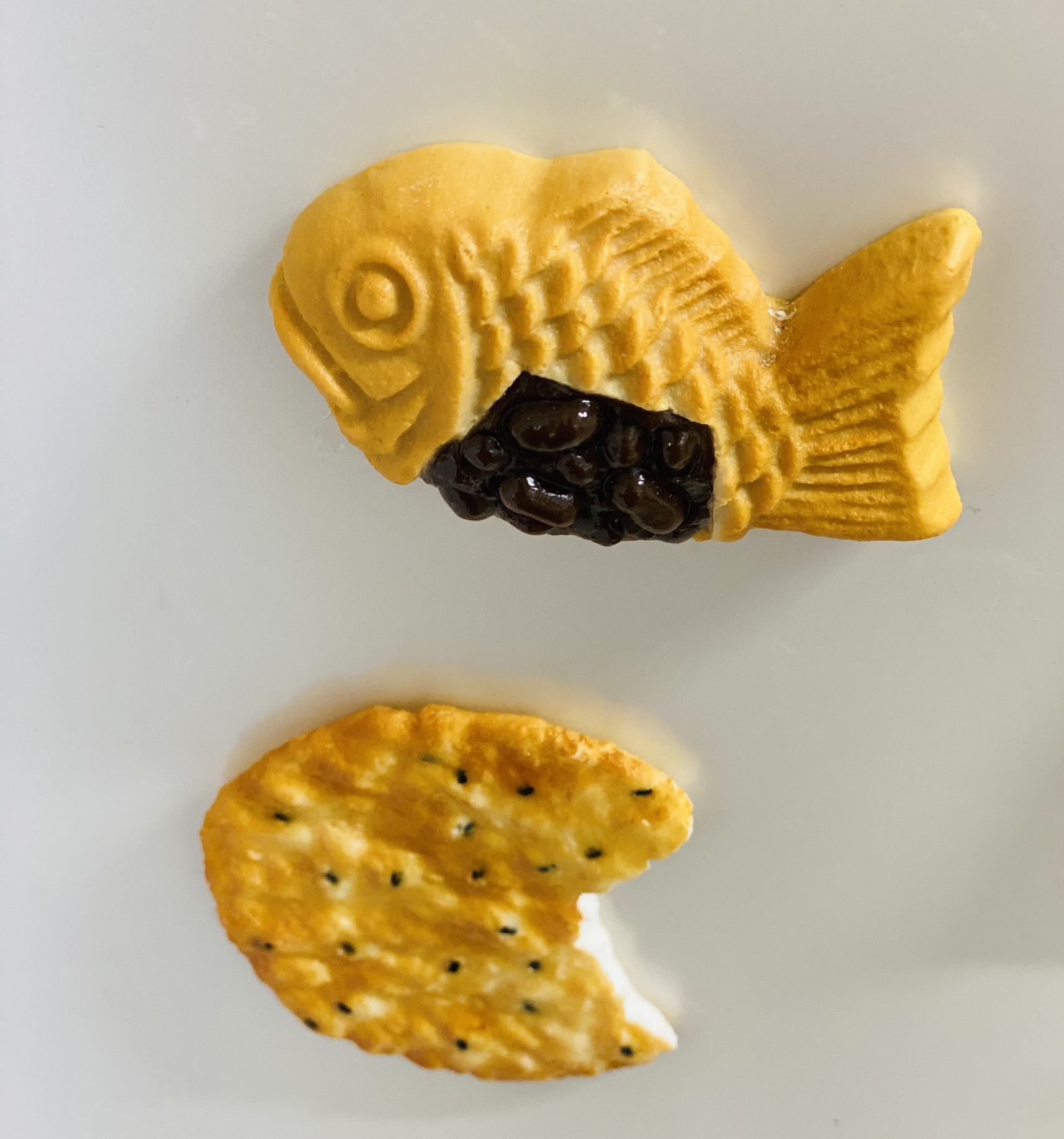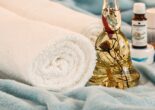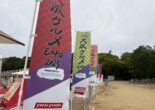One of the most interesting things about eating in restaurants in Japan is the fake food samples displayed in their windows. The fake food Industry is huge in Japan, catering not only to restaurants but also to locals and tourists looking for quirky magnets or key chains, or decorative items.
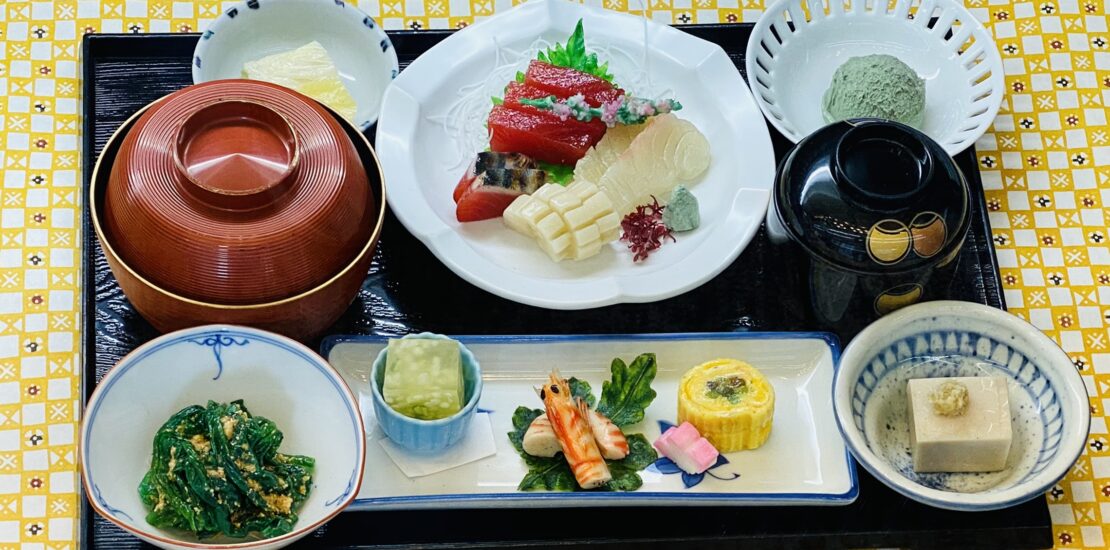
On my very first day in Japan, I decided to go out for a meal. As I walked down a street lined with restaurants, wondering what to eat, I was surprised to see that all of them had plates of food displayed just outside the entrance or in the display window.
What amazed me was that the food looked so freshly cooked. The butter on the pancakes didn’t disappear, the ice-creams were not melting, the beer remained frothy and the vegetables and meat looked fresh out of the oven. Once my Jet Lag had worn off and I could think clearly, I realized that the food was not real but fake.
It is the usual practice in Japan to display samples of the food being served in the restaurant in the display windows.
Whenever we go to a restaurant, we usually decide on what we want to eat by looking at the menu or asking the waiter about a particular dish. Not so in Japan. The Japanese decide what they want to order by looking at its replica in the restaurant’s window display.
The model will have everything from the size of the portion, the garnishing, and even the placement of the food exactly like the actual dish. The name of the dish and the price is also displayed. This is particularly useful for foreigners who do not speak Japanese and have trouble reading menus or conversing with the restaurant staff.
Apart from the fact that the Japanese prefer things to be visual than written, the reason behind these plastic models is said to be that when Japan opened up to the west in the beginning of the 20th century, a lot of westerners trooped in and they had a very tough time in understanding the Japanese cuisine. I suppose many a confused westerner must have ordered a plate of noodles and ended up with a plate of raw fish instead. Then the Japanese hit upon this ingenious idea of displaying fake “samples” of the dishes.
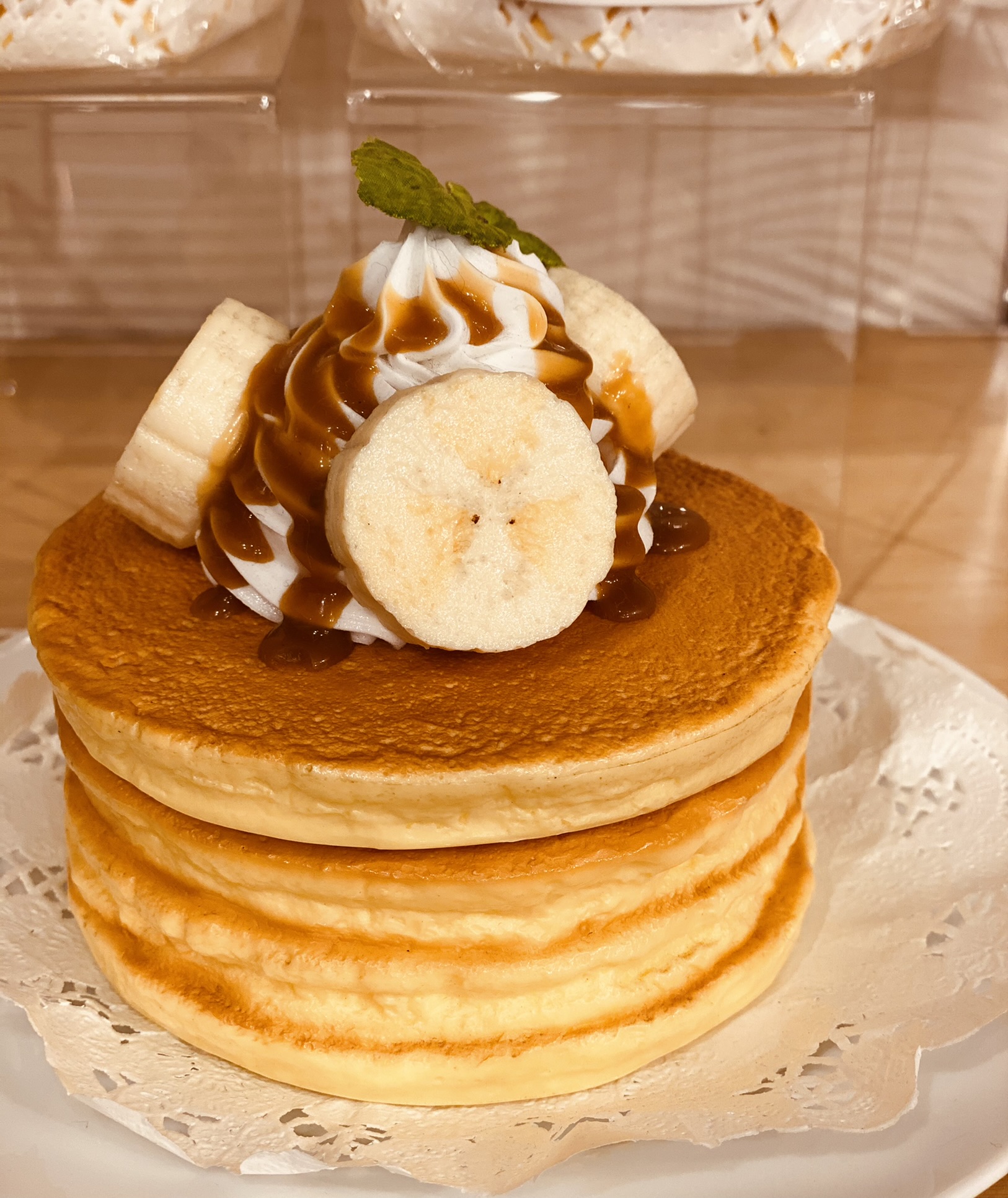
Now, サンプル食品 – Sampuru Shokuhin or Sample food is a huge industry in Japan.
The Father of Sample food is said to be Takizo Iwasaki. It is said that he got inspired by the candle wax that fell on the floor of his home and he decided to create food shapes out of it. He tried his hand at creating an omelet and when he showed it to his wife she thought it was real. Iwasaki opened a workshop in his hometown of Gujo Hachiman in the Gifu prefecture and later pioneered a production method that combined accuracy with volume.
Initially, the fake food was made out of wax. But the samples did not last long. The wax melted or became distorted and the colors faded. Today fake food samples are created using PVC. The silicon cast molds for food items are created using actual food. If there is a danger of the food item melting or disintegrating while creating the mold, clay replicas are used. Then the Silicon cast molds of food items are filled with liquid PVC. Once the sample has hardened it is painstakingly painted and airbrushed to make it look as realistic as possible.
Although things like bowls of rice, bowls of plain noodles, whole foods, and vegetables are manufactured in bulk, most restaurants send pictures of the dishes they want samples of.
The fake food artisans believe that the key to making realistic fake food is to mimic the actual cooking process. For example, to make sushi – plastic rice grains are heated and then molded to form a rice ball. Bits of meat or vegetables are cut into small pieces using actual knives and then pasted on the rice balls. Similarly, to make a bowl of noodles, the noodles will be created separately and then bits of hand-cut plastic pork or even green onions will be chopped and sprinkled over the bowl – just like a real chef would do.
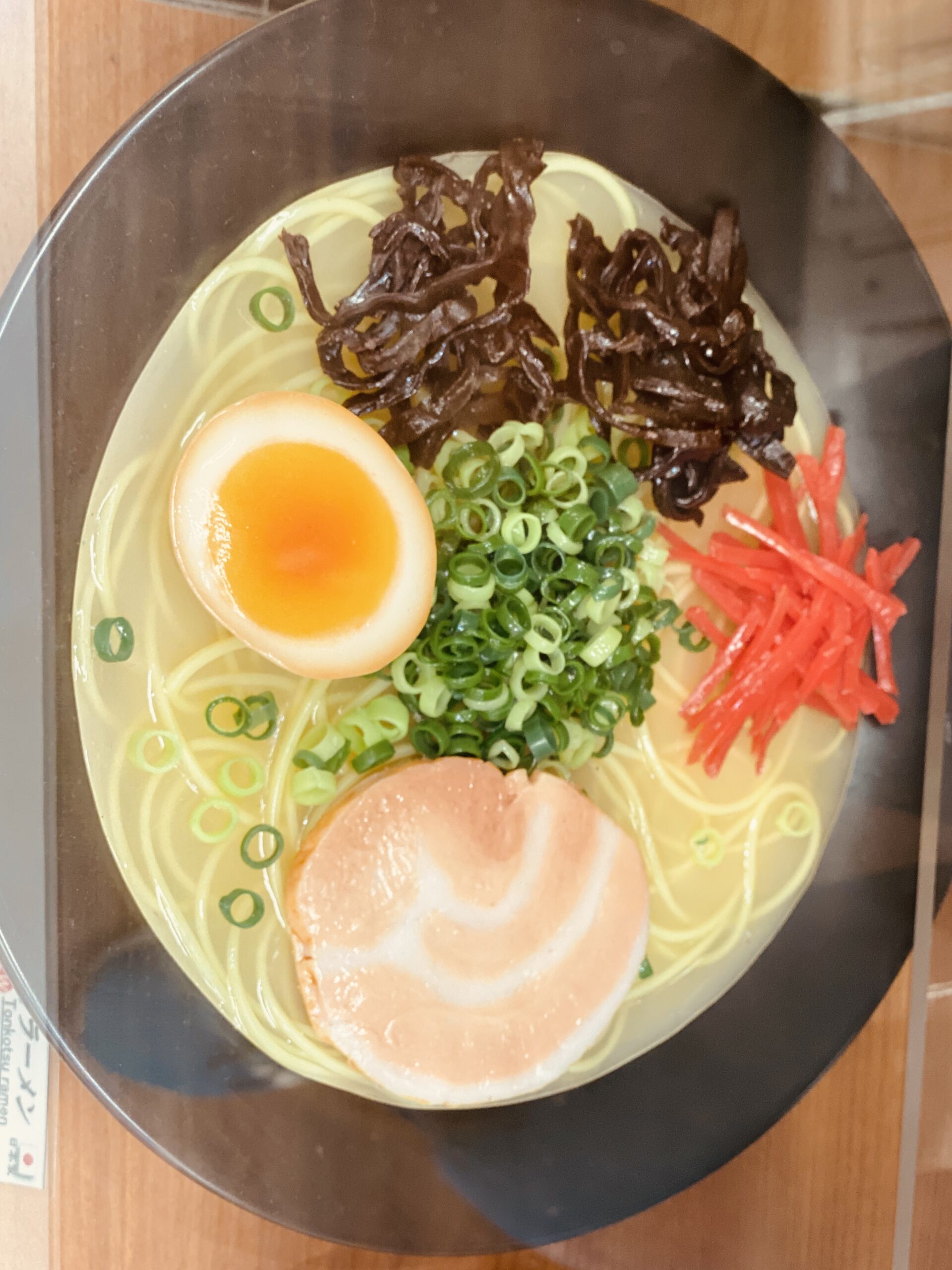
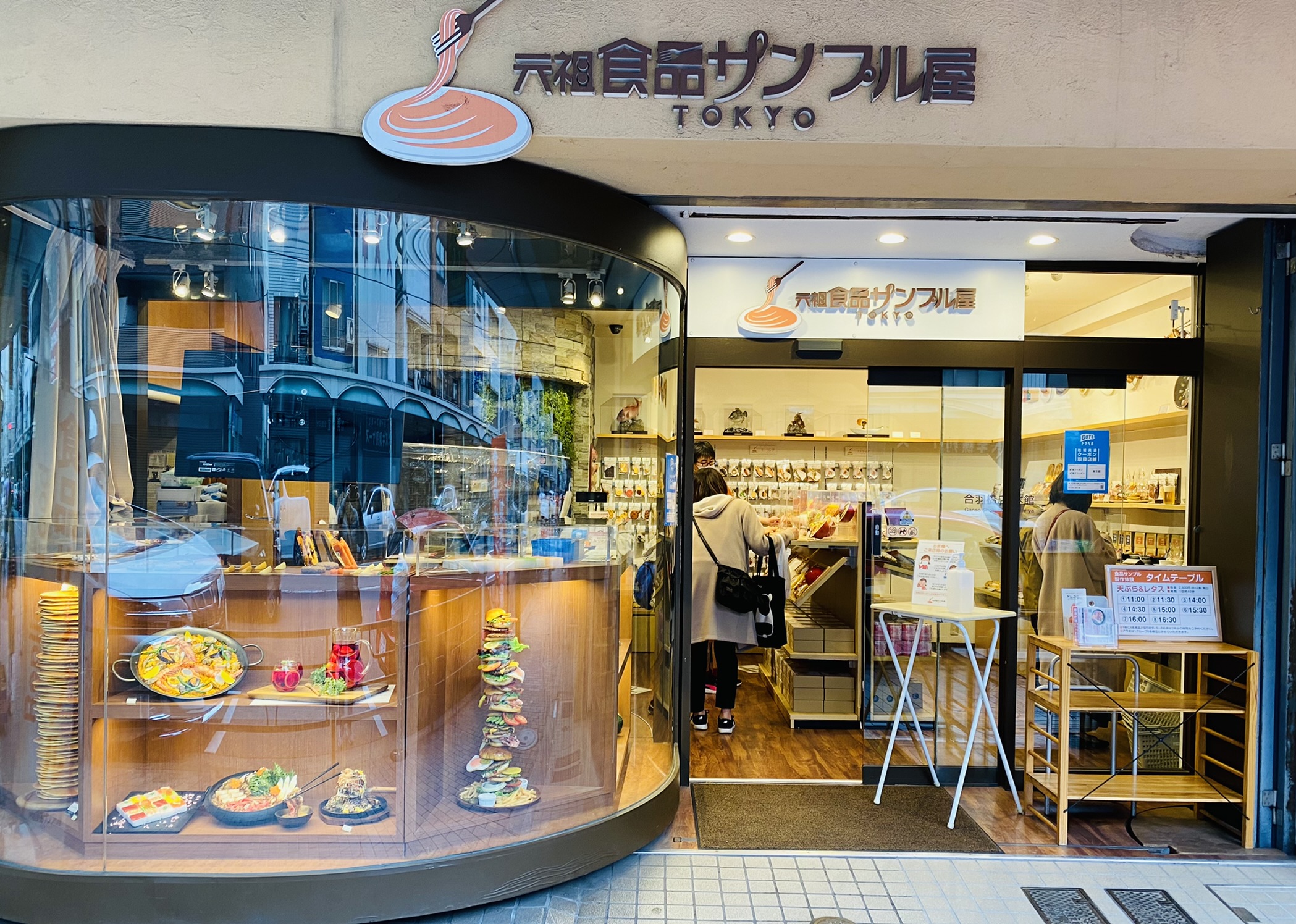
Guj Hachiman is still the fake food capital of Japan. 80% of Japan’s fake food is still produced there. You can buy food replicas in the numerous shops dotting the town and even try your hand at making fake food in one of the numerous workshops.
But closer to home in Tokyo, we have our own fake food paradise in Kappabashi street. Known as the Kitchen Town of Tokyo, Kappabashi street lies between Ueno and Asakusa. In kappabashi you will find everything that a cook needs – pots, pans, knives, serving dishes, and other cooking utensils. Kappabashi is also famous for shops that sell plastic food displays for restaurants.
The most famous shop there is the Ganso Sample store – which is the official store of Iwasaki Co. Here not only can you buy all sorts of fake food, you can also take part in a workshop that tells you how to create fake food items.
Providing fake food samples is one of the major tasks of these shops. But the fake food industry also caters to a lot of tourists and locals. You can buy fake food in the form of fridge magnets, key chains, phone charms or simply as quirky decorative items.
Don’t forget to visit the area to buy your own little keychain sushi or fridge magnet senbei next time you are in that part of the town!
